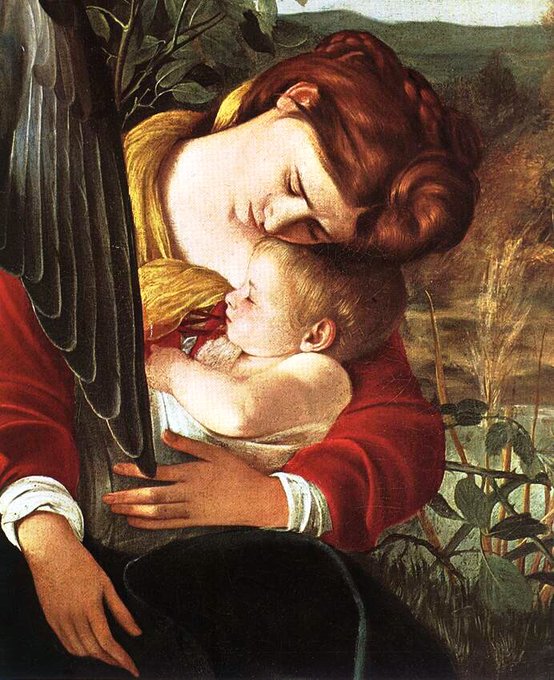The Entombment of Christ (1602) shows the artist’s amazing power of composition. The Crowning with Thorns (1602) & Taking of Christ (1602) also demonstrate his understanding of chiaroscuro- the treatment of light & shade. The latter includes his lantern holding self-portrait
Light & dark mark out Caravaggio’s work as well as the inclusion of ordinary people playing saintly roles. The latter led to criticism. Here is his Conversion of St Paul (1601) & Incredulity of St Thomas (1601)
One of my favourite images by him is this Rest on the Flight into Egypt (1596). I love its ethereal quality and the individual figures including the exhausted & maternal Virgin Mary. It is in a private collection in Rome
Zahrtmann painted works for himself & for the general public. His Dinner Table would have been popular whereas his Catherine would have disturbed for its erotic sensibility. Catherine of Sienna (1913), Fenja & Menja in Chains grinding Gold (1906) & My Dinner Table (1914)
Another feature of his late work was a series of self-portraits (1914 & three from 1915). Here we see the painter observe himself with wry amusement. With financial & emotional freedom his work had bloomed.
The freedom of Italy, away from strict ‘morality’ at home would allow him greater emotional & creative freedom. The Artist in his Studio (1907), Young Girl (1911) & the Artist’s Bedroom in Civita d’Antino (1911)
These works explore the painter’s interest in the male form. Zahrtmann was living during a period of extreme intolerance & had had friends suffer from state persecution during his 20s simply for being gay. Nero (1902), An Etruscan (1908) & Prometheus (1906)
Zahrtmann’s success would mean that he exhibited at the World’s Exhibition in Paris (1878/89/1900) & Chicago (1893) The Rise of the Students (detail & work, 1888) & Bird’s Eye View from Ravello (1891). Such commercial success allowed him to paint more for himself.
The artist’s painting of Ambrogio suggests a major part of his fascination with Italy & it’s freedom for foreigners, especially gay ones. Ambrogio is literally encouraging ‘come hither’! Ambrogio, Civita d’Antino (1883) & Masquerade (1882) & King Solomon (1888)






























